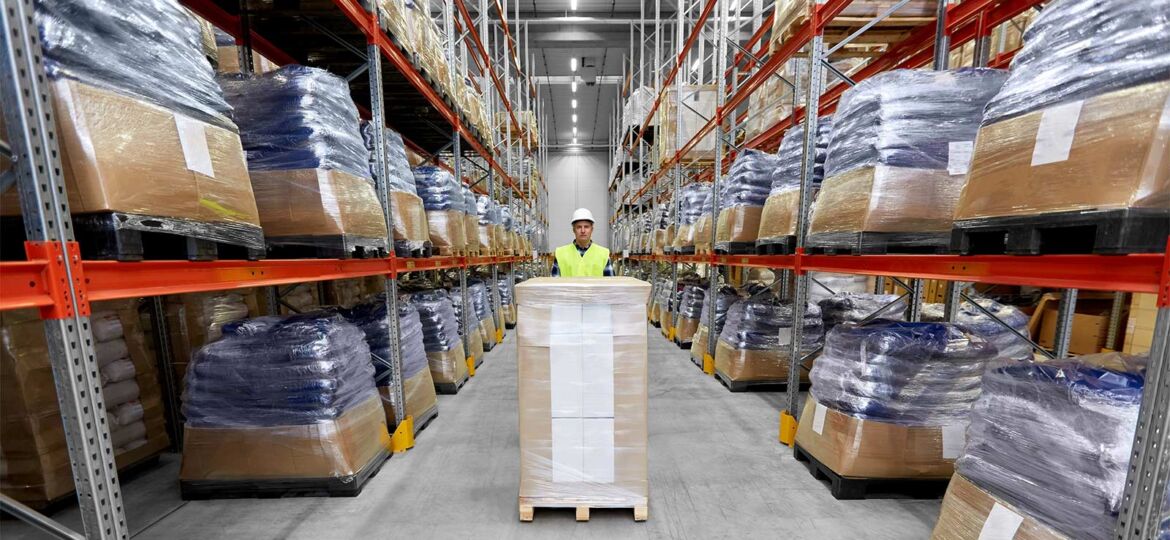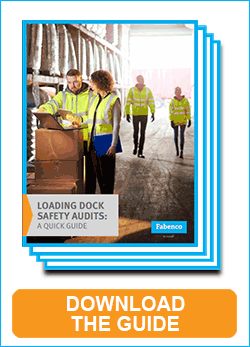
Fall safety is typically thought of as an outdoor issue in conjunction with rooftop safety, but falls can take place inside, as well. Ladders, mezzanines, loading docks, and more can present fall safety hazards in warehouses, fulfillment centers, and other facilities. OSHA 1910 carefully outlines the rules and requirements regarding fall safety measures, such as guardrail systems and metal swing gates, for indoor and outdoor work on elevated surfaces. Often, the lines seem blurred between OSHA standards, so let’s take a closer look at what OSHA 1910 means for you and your facility.
What is OSHA 1910?
OSHA 1910 outlines general guidelines that apply across industries, while OSHA 1926 applies specifically to construction. While there are many similarities between the two standards, non-construction job sites should note that standard 1910 requires fall protection to be in place for surfaces four feet above the ground (instead of six feet, which is the standard for construction).
While construction sites can default to the requirements outlined in 1926, warehouses, distribution centers, and fulfillment centers will need to protect their workplaces under the guidance of 1910.
Common Fall Hazards in Warehouses and Fulfillment Centers

Furthermore, there are many elevated surfaces within a warehouse or fulfillment center than can present a risk:
- Stairs
- Ladders
- Loading Docks
- Mezzanines
- Scaffolding
- Temporary Platforms
- Aerial Lifts
The risk of objects falling from heights and injuring someone below should also be considered. Standard 1910.28(c) addresses this concern, and outlines the use of personal protective equipment as well as screens and guardrails to prevent objects from falling, among other things.
Each type of hazard has specific guidelines for fall protection.
Fall Protection for Warehouses and Fulfillment Centers
Use OSHA-compliant equipment as required to protect your employees from workplace falls. Different work spaces require different safety solutions.
Ladders
There have been recent changes regarding ladder safety. Fixed ladders taller than 24 feet installed prior to November 19, 2018 must have a personal fall arrest system, ladder safety system, cage, or well. Those installed after that date must have a personal fall arrest system or a ladder safety system. In 2036 all fixed ladders 24 feet or higher will be required to have a fall arrest system.
Metal swing gates are also useful with ladders. When a guardrail is used around holes that serve as access points (like at the top of a ladder), be sure it has a “...self-closing gate that slides or swings away from the hole, and is equipped with a top rail and midrail or equivalent intermediate member…”
Ladder safety is also concerned with how employees use the ladder. Those guidelines are outlined in standard 1910.23.
Stairways
Standards 1910.28(b)(11)(i) and 1910.28(b)(11)(ii) state that you have to ensure the following:
“Each employee exposed to an unprotected side or edge of a stairway landing that is 4 feet (1.2 m) or more above a lower level is protected by a guardrail or stair rail system; “Each flight of stairs having at least 3 treads and at least 4 risers is equipped with stair rail systems and handrails…”
OSHA includes a thorough guide on the handrail and guardrail requirements based on the width of the steps and whether the stairs are enclosed or have one or two open sides.
Working at Heights on Mezzanines
Standard 1910.29(b) outlines the use of guardrails, which have many applications. They must be used along unprotected edges and around holes. These serve as a visual reminder to stay away from the edge as well as protection against an actual fall. If a guardrail must be removed, or if an employee is required to reach through an open indoor safety gate on an elevated surface, a personal fall arrest system must be in place.
An indoor safety gate, specifically a mezzanine safety gate, is useful here to ensure the leading edge is always protected. This type of indoor safety gate comes in a couple of designs, both of which use a counterbalanced system to keep a barrier between the employee and the edge.
In some cases, it may be appropriate to install a safety net below a fall risk zone, which could also apply on roofs, runways, and more. This may be required above dangerous equipment, for example, and used in conjunction with a fall arrest system for the employees working on the surface above the net.
Loading Docks
Again, guardrails or handrails are required if the dock is elevated four feet or more. There are exceptions to this. For example, if the dock is used only for materials handling via motorized equipment, and no one ever physically accesses the dock, the guardrail is not required.
Loading docks are another application for an indoor safety gate. Loading dock gates come in two styles: standard and dual vertical lift.
Scaffolding, Temporary Platforms & Aerial Lifts
A body restraint, a fall restraint, and/or safety nets may be required, depending on the nature of the job.
A Word About Rooftops
Even though most work will take place within your facility, work or maintenance may be needed on your rooftop. 1910.28(B)(13) outlines work on low slope roofs. Though there are some exceptions based on how far from the edge the employees are working, and how often they’re required to work there, employers generally “…must ensure each employee is protected from falling by a guardrail system, safety net system, travel restraint system, or personal fall arrest system.”
A harness lanyard can stop an employee from working too close to an unprotected edge, or it can serve as a fall arrest system, depending upon the type of harness and lanyard you use. Use of an appropriate safety harness is necessary with the harness lanyard.
Don’t overlook indoor fall hazards when you’re assessing the safety of your warehouse or distribution center. The use of proper safety equipment combined with thorough training in how to use it will protect your employees and help your business thrive.
You don’t have to guess about what equipment to use. We can help. For OSHA-compliant guardrails, metal swing gates, or a harness lanyard, among other safety equipment, contact us.




